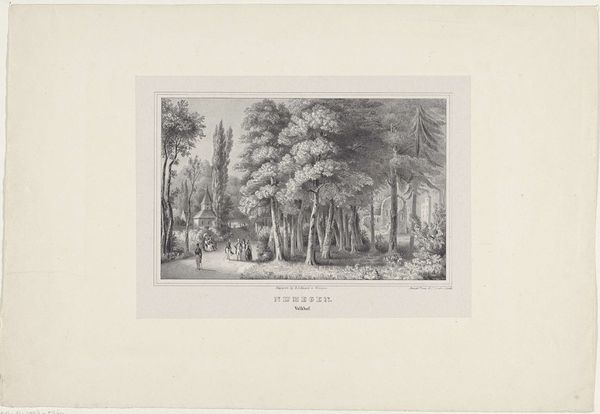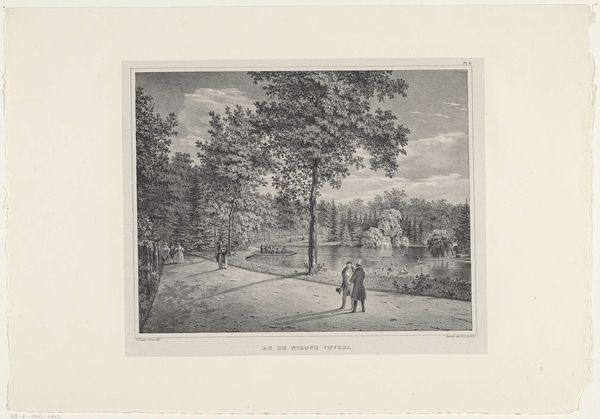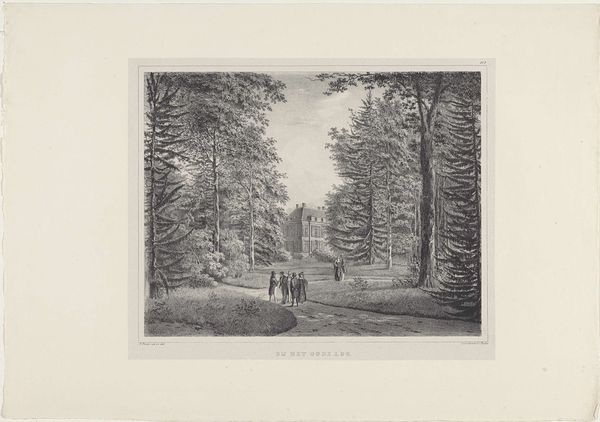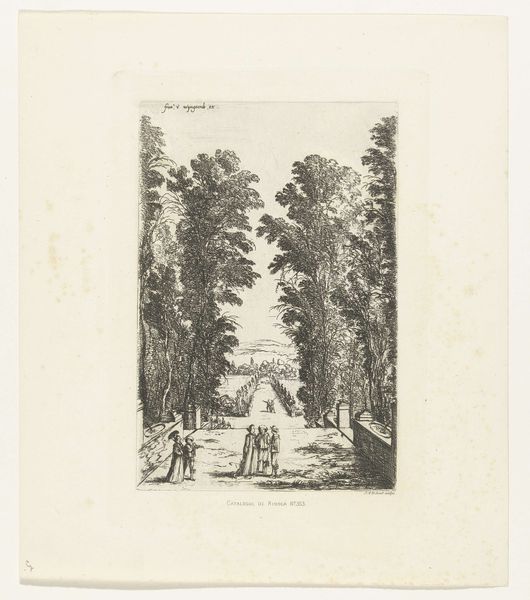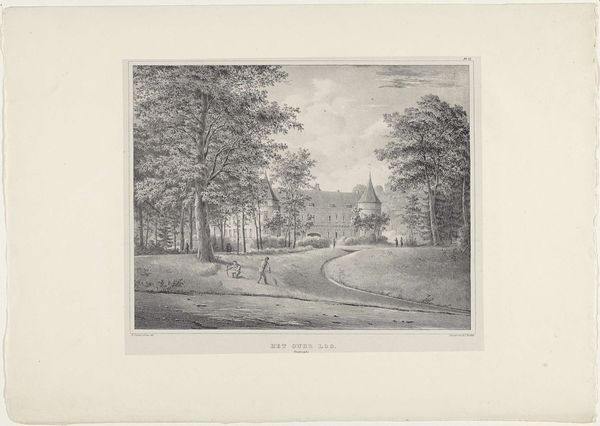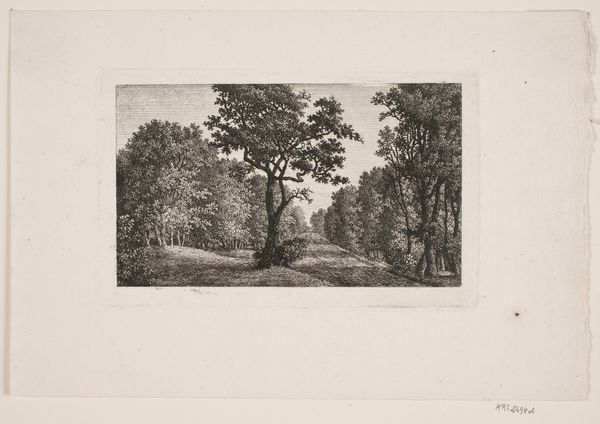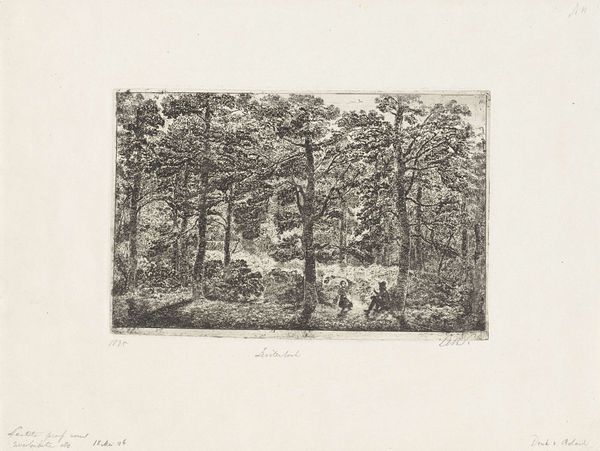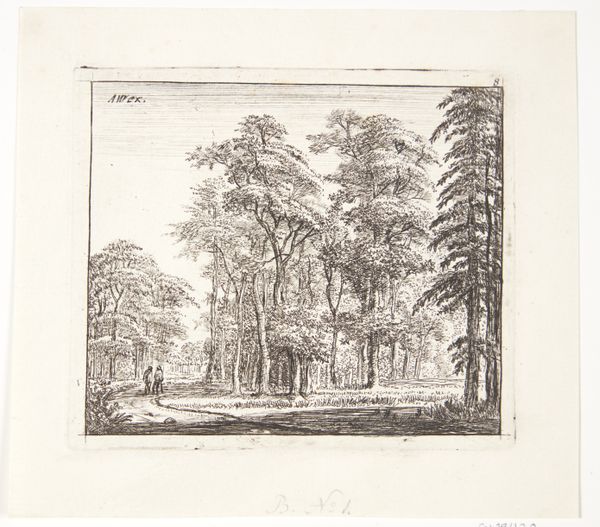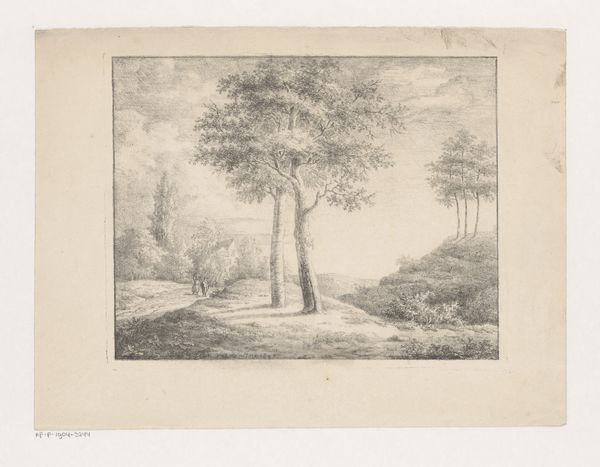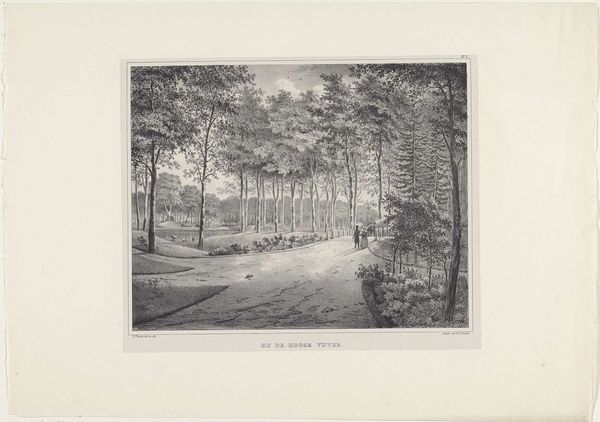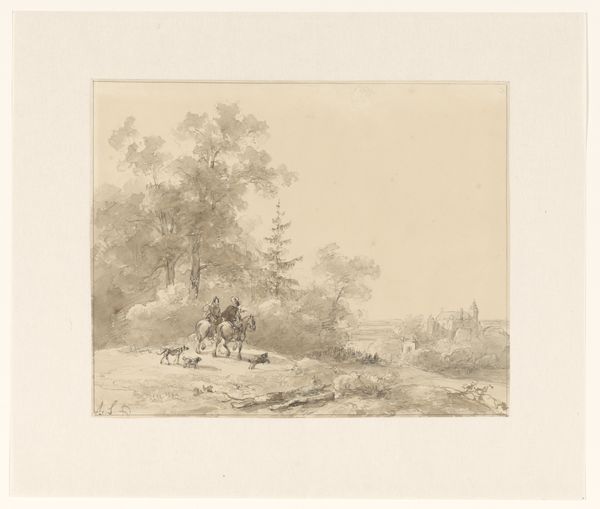
#
white colour balance
#
photo of handprinted image
#
light pencil work
#
pale palette
#
pale colours
#
light coloured
#
repetition of white
#
white palette
#
park
#
tonal art
#
repetition of white colour
Dimensions: height 290 mm, width 425 mm
Copyright: Rijks Museum: Open Domain
This is Otto Baron Howen's "Het Valkhof in Nijmegen," a black chalk drawing. The drawing is from the early 19th century, a period of significant social and political upheaval in the Netherlands. The Valkhof, depicted here, carries a rich historical and cultural weight, having been the site of a castle with connections to Charlemagne. However, by Howen's time, much of the structure was in ruins, and the area had become a public space. It is interesting to note how Howen frames the space, presenting a curated view of nature, a tree-lined promenade that subtly echoes the formal gardens of the aristocracy. The very act of depicting this location speaks to the changing dynamics of the era. The rise of public spaces and their representation in art reveals a shift in social values, a move towards shared cultural experiences, and a negotiation of historical memory. To fully appreciate such an image, we need to turn to historical records: urban plans, social commentaries, and accounts of public life. Only then can we understand the complex interplay between place, representation, and the evolving social landscape of 19th-century Netherlands.
Comments
No comments
Be the first to comment and join the conversation on the ultimate creative platform.
